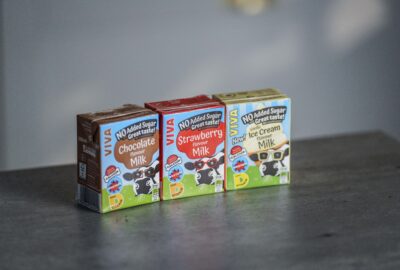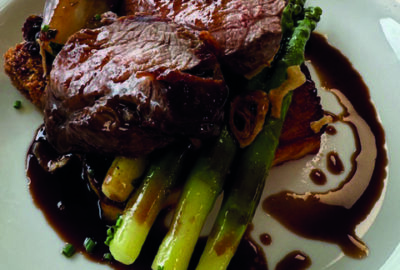Katie Thomas is the founder of KTM Design, the South West Regional Director of the Society of British and International Design (SBID) and is also a visiting lecturer of the Arts University Bournemouth, where she runs her own Interior Design evening courses.

Interior design plays a huge part of the atmosphere and enjoyment of a space and can be used as a tool to help promote a brand’s image through clever use of finishes, colours and space planning. Interiors affect people’s emotions and perception, so it is essential to have inviting spaces that can help build stronger relationships with customers.
How COVID-19 has impacted interior design in hospitality
Hospitality operators are focusing their attention into creating a unique, memorable experience for customers. They need to stand out from the crowd to attract customers, not only offering quality, but also comfort and safety.
The pandemic has certainly shifted focus towards wellbeing, introducing more natural elements into spaces such as plants or natural textures. In addition, more thought is going into rethinking the use of space in terms of social distancing, favouring antimicrobial finishes and materials that are easy to clean. As interior designers, we need to balance creativity with problem-solving.
How often should an operator look to refresh their interior design concept?
The key to good interior design is creating a balanced mix of timeless and on-trend elements which could be easily updated. Tiles or flooring could be considered as an investment, whilst bar stools or decorative accessories could be easily replaced with the ever-changing trends. Every 4-5 years is common for hospitality venues to have a makeover, but this could just be an evolution of the current design to bring the space more up to date and freshen things up without spending a lot of money.
A Re-Design doesn’t always need a big budget
Any redesign can be expensive, but a good one includes clever design decisions accentuating the best features of an interior. Thinking about how you could evolve the current design in order to utilize some of its existing features is a good starting point for a cost-effective redesign. It could simply be a matter of adding a fresh coat of paint and introducing an updated colour scheme through textiles and accessories.
Tips to make your environment more welcoming
Accessibility is a key factor in designing a bar or a restaurant. It is important to keep in mind who the customer is and how the space will be used. Bars are usually the focal point of the space where the customers can relax and the staff can safely observe the atmosphere of the interior. A clear separation of the servicing and served areas is necessary for a successful functioning hospitality interior. It is advised to tuck the delivery points away from the busy circulation areas used by customers. It is important to allow enough space between seating areas so the staff can work productively and unobstructed, whilst the customers can enjoy their experience. In addition, the durability and fire safety of finishes is a key design point.
Interior design trends in hospitality
Indoor/Outdoor
A key theme we’ve noticed is the indoor/outdoor trend, which many hospitality businesses are adopting to accommodate changing customer needs as they look for a more open, spacious environment to dine in. Creating an almost tropical setting with lots of plants, rustic wooden features and leafy-patterned soft furnishings evokes a calming, natural environment. Installing lots of windows also creates more light and gives a more open feel to indoor spaces.
Modern Eco-Friendly Design
Natural materials such as wood, stone and terracotta add texture and accentuate the forms of modern sleek furniture pieces. Lighter wood and earthy tones are brought in with the natural materials, accompanied by biophilic pattern textiles. Plants are a key design element for eco-friendly design and are often used to create a feature within a space such as a living wall or placing hanging plants on timber partitions. Patterned tiles are another great way of introducing colour and texture. Established ceramic tiles are more appropriate for hospitality interiors than concrete ones due to being less porous which makes them more durable and not stain.
Eclectic
Infused with personality, eclectic interiors borrow design elements from other design styles and create a cohesive atmosphere through colour accents and interesting decorative pieces. Murals are a great way of introducing colour into the interior, creating a memorable focal point within the space. The interiors are infused with personality through the addition of expressive decorative accessories such as a trendy lighting fixtures or artwork. Additional visual interest can be introduced by choosing tiles with an unusual pattern or bright colour as highlights around the bar area. This style is perfect for multifunctional flexible spaces.
Photography credit – Flamingo Café


